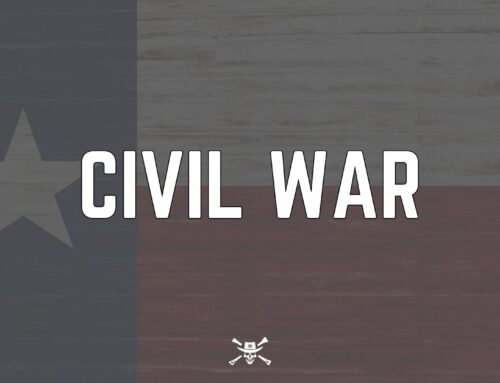The Battle of Palo Alto: The Opening Clash of the Mexican-American War (May 8, 1846)
Introduction
The Battle of Palo Alto, fought on May 8, 1846, near Brownsville, Texas, marked the first major engagement of the Mexican-American War. This battle set the stage for a series of conflicts that would ultimately lead to significant territorial changes in North America. The clash involved United States forces under General Zachary Taylor and Mexican troops commanded by General Mariano Arista.
Background of the Battle
Strategic Importance of Palo Alto
Palo Alto, located near the Rio Grande, was a strategic location due to its proximity to disputed territory between the United States and Mexico. The area was crucial for controlling the region and ensuring supply lines for both armies. The battle’s outcome would have significant implications for the control of this contested borderland.
Context of the Battle
Tensions between the United States and Mexico had been escalating due to territorial disputes following the annexation of Texas by the United States in 1845. The U.S. considered the Rio Grande as the southern boundary of Texas, while Mexico claimed the Nueces River as the border. These conflicting claims led to skirmishes and the eventual deployment of U.S. troops to the disputed area.
Preparations and Mobilization
United States Forces and Leadership
The United States forces, commanded by General Zachary Taylor, consisted of approximately 2,300 men, including infantry, cavalry, and artillery units. Taylor’s objective was to secure the disputed territory and protect American settlements. The U.S. Army was well-trained and equipped with the latest artillery, giving them a significant advantage.
Mexican Forces and Strategy
The Mexican forces, led by General Mariano Arista, numbered around 3,400 soldiers, including infantry, cavalry, and artillery. Arista aimed to repel the U.S. forces and maintain Mexican control over the disputed territory. The Mexican Army, though larger in number, faced challenges in terms of logistics and supply lines.
The Day of the Battle: May 8, 1846
Initial Engagement
On the morning of May 8, 1846, General Taylor’s forces encountered General Arista’s troops near Palo Alto. The initial engagement began with artillery exchanges as both sides sought to weaken the other’s positions. The U.S. artillery, particularly the “flying artillery” units, played a crucial role in the early stages of the battle.
The U.S. Defense
As the battle progressed, Taylor’s forces established strong defensive positions. The U.S. artillery’s mobility and firepower allowed them to inflict significant casualties on the advancing Mexican troops. Despite their numerical superiority, the Mexican forces struggled to break through the well-coordinated U.S. defenses.
Intensified Combat
The combat intensified as Mexican cavalry units launched several charges against the U.S. lines. The U.S. forces, using their artillery and disciplined infantry formations, repelled these attacks. The battlefield, characterized by tall grasses and open terrain, provided limited cover, making the engagements particularly brutal and costly.
Turning the Tide
The turning point of the battle came in the afternoon when the U.S. artillery units executed a series of well-coordinated barrages that devastated the Mexican lines. General Arista, recognizing the untenable position of his forces, ordered a retreat. The disciplined and effective use of artillery by Taylor’s forces was a key factor in securing the victory.
The Aftermath of the Battle
Mexican Retreat and Casualties
Following the intense fighting, the Mexican forces retreated from the battlefield. The Mexican casualties included approximately 100 soldiers killed and many more wounded. The retreat marked a significant setback for the Mexican Army and underscored the challenges they faced in confronting the better-equipped U.S. forces.
U.S. Victory and Impact
The victory at Palo Alto was a significant morale booster for the U.S. forces. The successful defense and effective use of artillery demonstrated the strength and capability of Taylor’s army. The battle set the stage for further U.S. advances into Mexican territory and underscored the effectiveness of U.S. military tactics.
Strategic Impact
The Battle of Palo Alto had a profound impact on the Mexican-American War. The victory allowed the U.S. to secure its positions near the Rio Grande and paved the way for subsequent battles, including the Battle of Resaca de la Palma. The success at Palo Alto demonstrated the strategic importance of artillery and the advantages of disciplined military tactics.
Legacy and Commemoration
The Battle of Palo Alto is remembered as a pivotal event in the Mexican-American War. The bravery and determination of both U.S. and Mexican forces are commemorated through historical markers, reenactments, and educational programs. The battle serves as a testament to the complexities and challenges of early American military engagements.
Legacy of the Battle of Palo Alto
Historical Significance
The Battle of Palo Alto holds a significant place in the history of the Mexican-American War. It marked the opening clash of a conflict that would reshape the boundaries of North America and have lasting implications for both the United States and Mexico. The battle demonstrated the importance of strategic planning and effective use of artillery in military engagements.
Cultural Impact
The legacy of the Battle of Palo Alto is deeply ingrained in American and Mexican history. The courage and resolve of the soldiers who fought are celebrated in folklore, literature, and popular culture. The battle serves as a symbol of the broader struggle for control and the enduring spirit of determination that defined the Mexican-American War.
Modern Reflections
Today, the Battle of Palo Alto is viewed with a sense of historical pride and reflection. It serves as a reminder of the challenges and sacrifices faced by both U.S. and Mexican forces. The battle’s legacy is honored through education, preservation, and public commemoration, highlighting its significance in the broader context of American history.
Conclusion
The Battle of Palo Alto, fought on May 8, 1846, was a significant engagement in the Mexican-American War. Despite facing a determined Mexican defense, the U.S. forces successfully secured a decisive victory. The battle had a profound impact on the control of the Texas border region and highlighted the strategic importance of effective military tactics.
By exploring the history and impact of the Battle of Palo Alto, we gain a deeper appreciation for the courage and determination of those who fought in the Mexican-American War. The story of this battle underscores the importance of strategic planning, resilience, and the enduring spirit of determination that continues to define American history.





